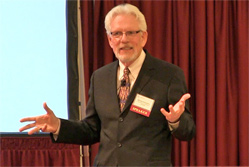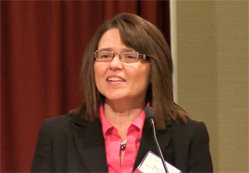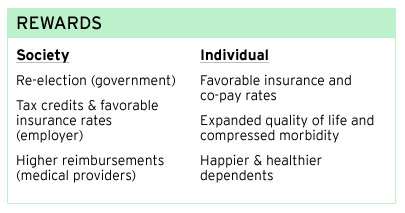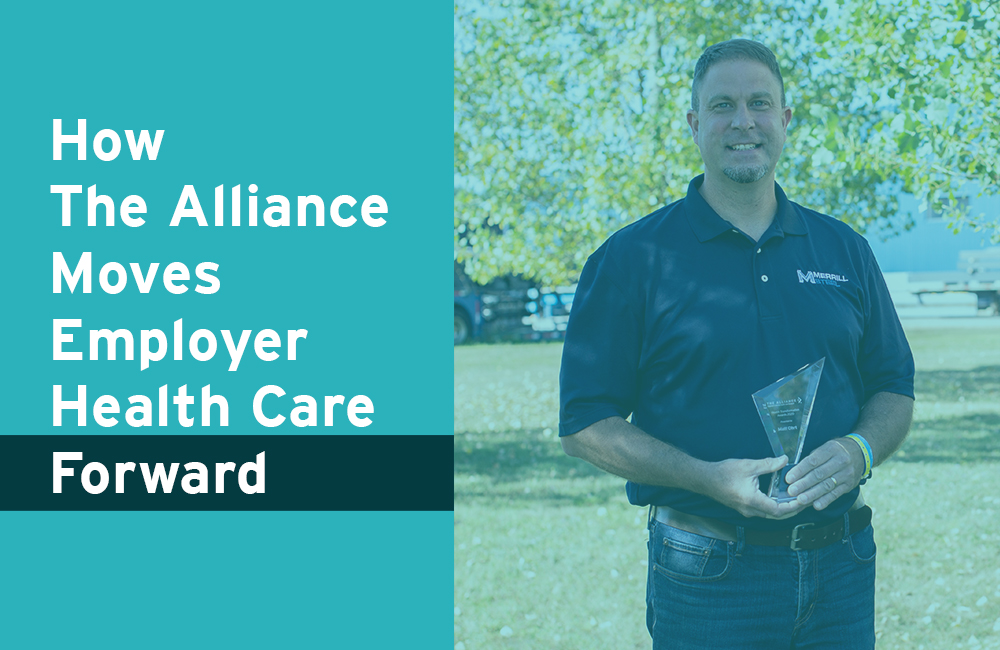
‘Population health’ is much more than the absence of disease
The absence of disease is a common definition of “wellness” and “population health”. But a worksite program could find that definition limiting to both its funding and its potential to produce a healthy, vibrant workforce with lower health care costs and higher productivity.
Michael H. Samuelson emphasized the value of seeking “population health” – a term he prefers to “wellness” because of its broader scope and wider aims – at the Alliance Learning Circle on Feb. 5 on
“Paternalistic Sick Care to Collaborative Healthcare: A Moral Responsibility and An Economic Imperative” at Monona Terrace.
Addressing The Alliance’s cooperative membership of employers who self-fund health benefits, Samuelson said companies need to change their culture to support population health and retain high-performing employees.
That means reaching beyond the formal definitions of who we are – occupation, schooling, past job titles – to reach the “texture and context” of our lives as parents, spouses, friends and individuals with our own sets of interests and passions.
For example, Samuelson’s formal background includes Vietnam era veteran, university professor, former Blue Cross Blue Shield executive, U.S. policy adviser and author. But his informal list is much broader, ranging from grandparent and cancer survivor to “voracious reader” and “international mountaineer” currently training to climb in Antarctica.
Appeal to Self-Interest
Creating widespread change in attitudes toward health and fitness will require appealing to employees on the basis of their self-interest, Samuelson said. That means employers must move from an intellectual approach that explains why health and fitness matter to a visceral approach using stories about “us” that resonate with the audience.
Creating visceral approaches to better health must extend beyond the workplace to include the community and public policymakers. Everyone involved in health – individuals, employers, government,
medical providers – must stop “handing off” responsibility for population health to someone else.
“There’s no handing off any more in this industry,” Samuelson said. “It belongs to us. The notion we can hand this off is suicidal.”
[box]
Learn More from Wisconsin’s 63 County Coalitions
Wisconsin has 63 coalitions that are already tackling population health by working to improve nutrition or physical activity, according to Mary Pesik, chronic disease prevention unit supervisor for the Wisconsin Division of Public Health.
The Wisconsin Department of Health Services maintains an online list that can link employers to information about local organizations.
[/box]
A vital step is changing how we focus health care – and where we spend health care dollars – from disease management to primary prevention. That means we have to “stop the finger-wagging” when
people develop conditions that lead to disease, such as obesity, and understand where the behaviors originated so we can offer options and opportunity for change.

The Will to Change
Samuelson said there appears to be no “political will” to addressing population health at the state or federal level. He urged the audience to use its votes to select leaders who are committed to this approach.
He also urged them to question people who use words like “hope” to mask the reality that too little is being done to help drive population health nationwide. Leaders may say that nothing matters more than children, for example, while failing to pursue policies that promote children’s good health.
“If you want to solve the health care crisis, it’s not an issue of hope, it’s an issue of action,” he said.
Samuelson said the health care system is currently organized to devote funding, training and treatment to dealing with diseases. As a result, we have the technology to keep the average person alive
until age 78 to 80, even if their quality of life is eroded by an extended period of “morbidity” while they cope with disease. If we improved population health, Samuelson said the average person could
have more quality of life for a longer period of time with a compressed period of coping with disease near the end of life.
A New Social Contract
Achieving population health will require a new “social contract” where people are held accountable for behavior. That social contract should define responsibilities, penalties and rewards at every level of society.


We must also stop accepting that we will all eventually have some disease or condition. Instead, we should live in ways that seek to extend our best health as long as possible.
Persuading people to make that shift will be difficult if we continue to talk about health using abstract concepts such as “wellness.” Instead, Samuelson urged employers to take a “high touch” approach, reinforced by technology, to shift the conversation away from blood pressure and high cholesterol levels, and toward making sure you’re alive to watch your child graduate from high school or hold your first grandchild.
“We have to tap into what shakes their bones and lifts their spirits,” Samuelson said.
[box]




